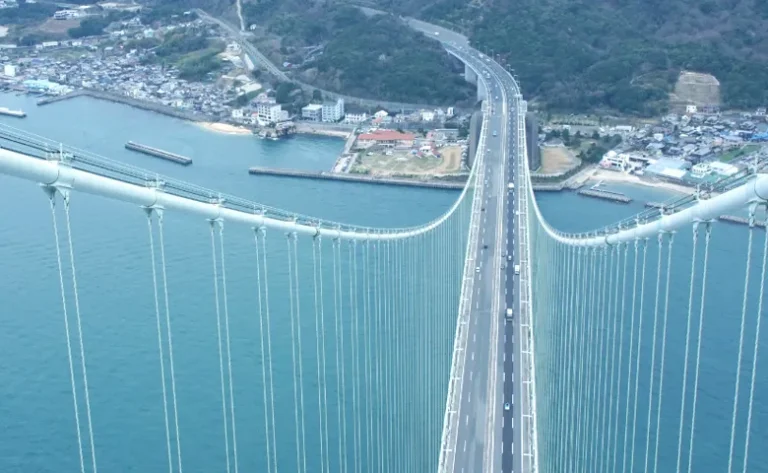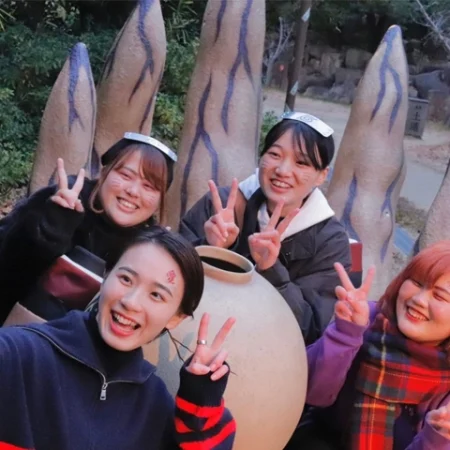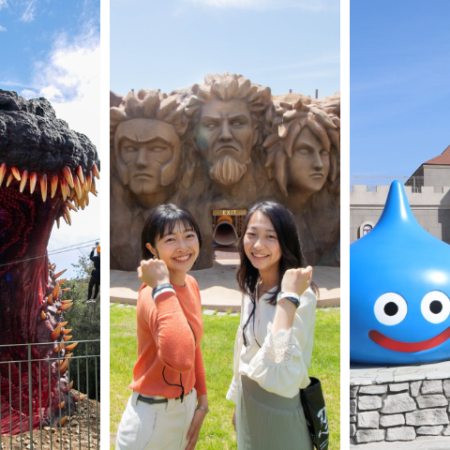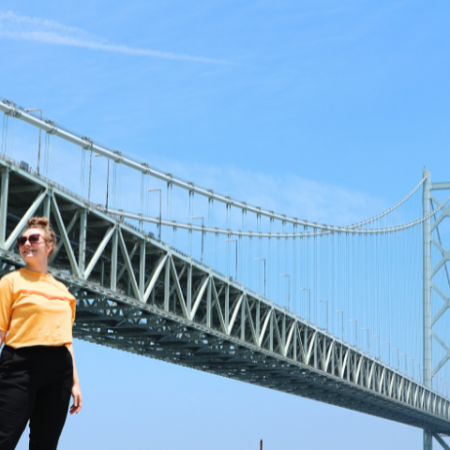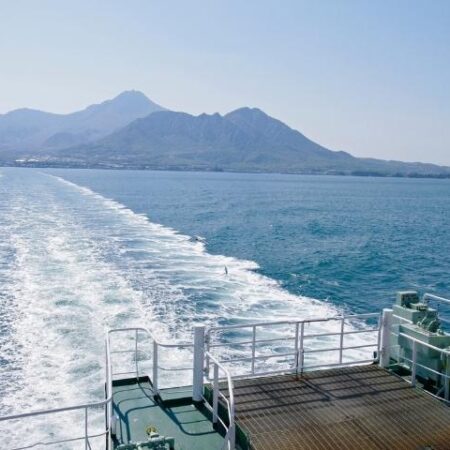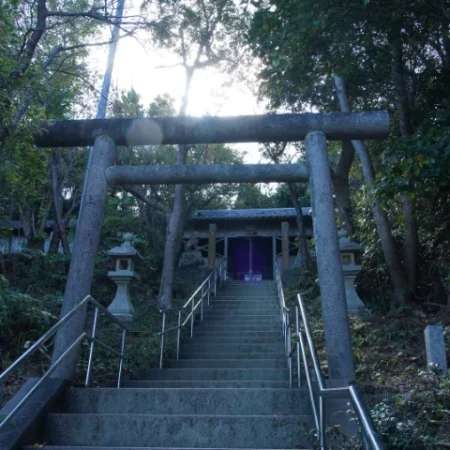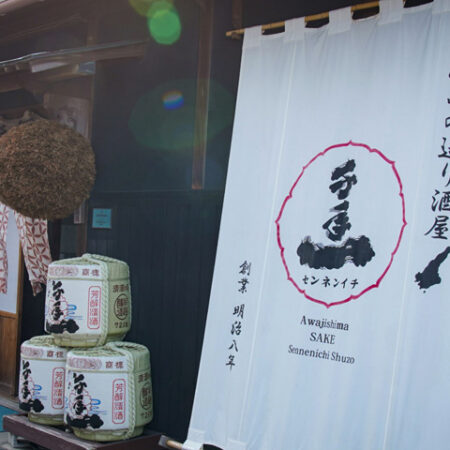Many people who come to Awaji Island for sightseeing want to experience and see scenery that can only be seen here. “The Akashi-Kaikyo Bridge World”, a climbing tour of the Akashi Kaikyo Bridge, is perfect for such visitors.
It has been 25 years since the Akashi Kaikyo Bridge was built. The climbing tour is a great opportunity to be guided directly by engineers who were involved in the construction of the bridge. They were young when they were building the bridge, and all accomplished engineers that Japan should be proud of. The Akashi Kaikyo Bridge was built to service the island for upwards of 200 years.
Table of Contents
Akashi Kaikyo Bridge World Climbing Tour from Awaji Island
The climbing tour takes you to the top of the main tower, which is about 300 meters above sea level, through a maintenance passageway that is normally inaccessible to the public, to experience a 360° panoramic view. Visitors can enjoy the inside of the bridge and the spectacular view from the top. In addition, you will be privy to fascinating information about the difficulties faced during the construction period (from those who experienced the construction firsthand), and insights into the ingenious technology used to build and maintain the world’s largest suspension bridge (at the time of construction).
The Unique Terroir Experience of Hyogo Prefecture on Awaji Island
The Meeting Place is “Rest Stop Awaji”
The entrance to the experience is at the foot of the huge anchorage pillar on the Awaji side. When the tour is about to start, the shutters there will open and you will be led inside.

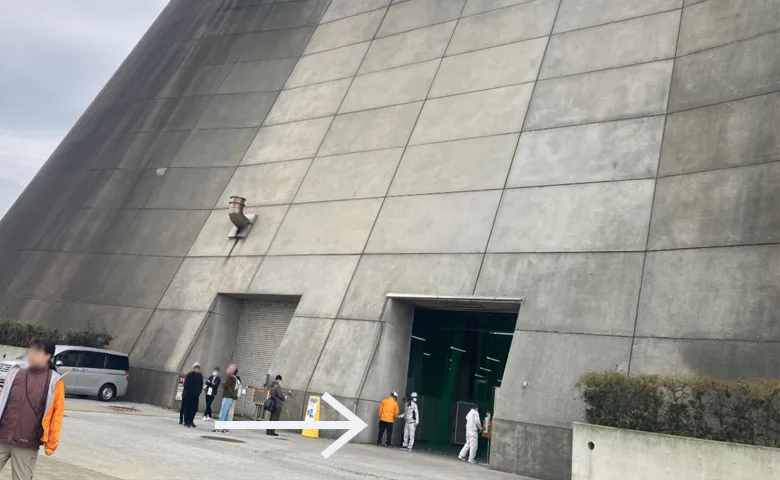
You should take a seat according to the seating chart ready for the short pre-talk. The tour leader introduces the tour, divides the group, and explains various rules and precautions for the tour. This time, the tour was almost full. There were a variety of participants, some solo, some with family, and some with friends.
The climbing tour takes about 2 hours, but there are no restrooms along the way, so be sure to use them beforehand. You will also be told to strap everything around your neck or store it in the jacket that is loaned for the tour, as dropping anything from the tower could result in a serious accident. Belongings can be left at the briefing site, but less is better. If you do not have a strap for your phone, a rental strap is provided.
We recommend that you wear clothes that are comfortable to move and shoes that are easy to walk such as sneakers. It may be windy depending on the season, so it may be a good idea to wear a windbreaker or something similar. Original gloves and a small walkie-talkie & earphone for listening to explanations are also provided. You do not need to bring anything in particular except a smartphone or camera for taking pictures. Follow the guide and depart. First, there are 171 steps to climb (about 40 meters), up to the bridge girder walkway.
1 km on the Wire Mesh of the Bridge Girder Walkway
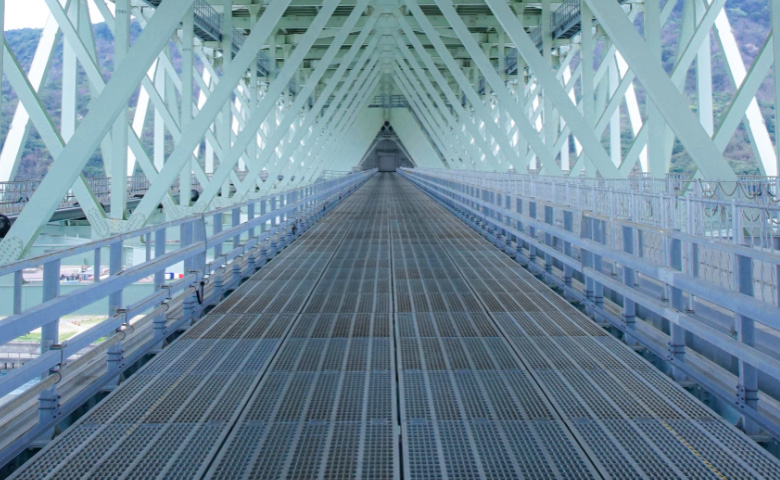
Once you have ascended the stairs, you will enter a maintenance corridor. The mesh-like wire netting is around 40 meters above the surface of the sea at this point. At this point, we were told that even here, it is okay for those who are afraid of heights to cancel. The suspension bridge is a little shaky because of the traffic passing above. The shaking is intentional and helps to release all the forces involved.
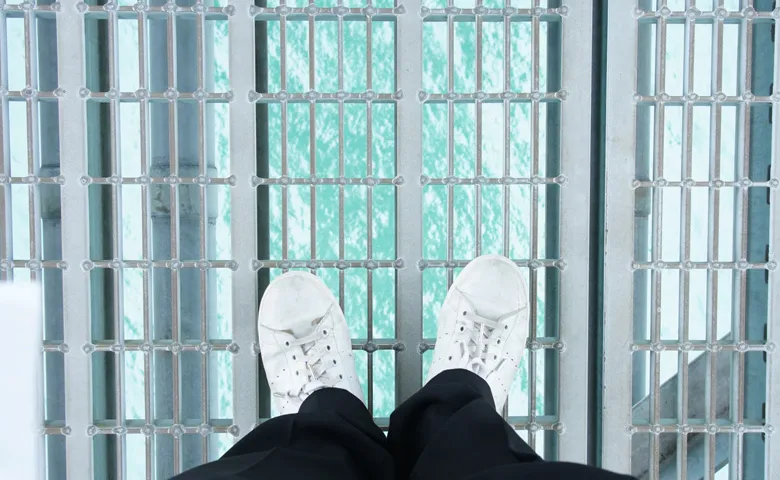
Boats sailing by can also be seen from above. The ocean extends on both sides as well. You can enjoy a special aerial walk while feeling the wind. Take your time while listening to the detailed explanation on the walkie-talkie.
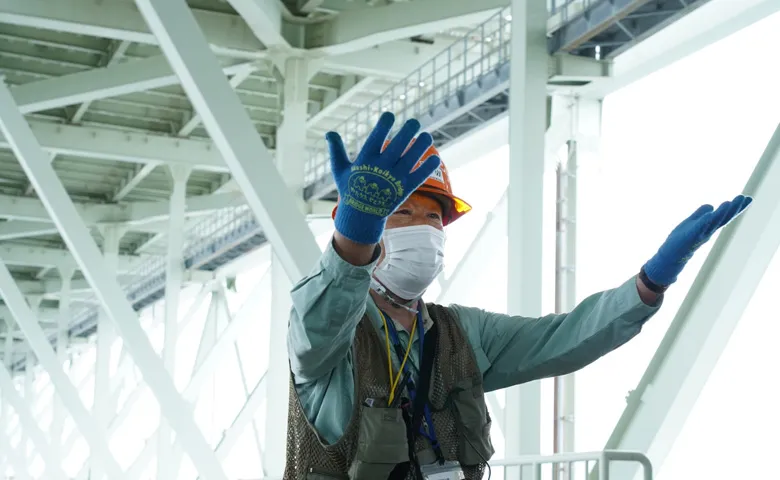
Even though the iron wire mesh is exposed to the sea breeze, it has been in place for 25 years without being painted, thanks to a special six-layer coating. The wire mesh is coated in fluorine. I was surprised by the advanced technology. You can also see from the inside the ingenuity of the wind-absorbing structure that can withstand the speed of typhoon winds.
The 1991-meter-long suspension bridge was completed despite being hit by the Great Hanshin-Awaji Earthquake during construction. The earthquake caused the ground to move 1m from the original plan, resulting in a length of 1,991 m.
The engineers involved in the construction of the bridge took their responsibility very seriously. Even though they trust their own skills, it’s interesting to learn, that they feel that this project is bigger than them and somehow miraculous. They feel honored to have worked on the project, and they dub it the “miracle bridge”. It feels like a very respectful nickname.
In addition to the traffic, the Akashi Kaikyo Bridge also carries water, power lines, and communication cables to the island, making it a key part of the region’s infrastructure. During the tour, we can learn so much about the Akashi Kaikyo Bridge, and the hard work of the (incredible) 2.1 million people who were involved in its construction, over the 10-year period it took to build. incredibly, there were no serious accidents during construction. In that sense, the tour was a humbling experience, that left me with an overwhelming feelings of gratitude to all those people.
The economic effect of the opening of the bridge was about 2.4 trillion yen in 2018 (a single year), of which the effect for the Shikoku region is about 0.9 trillion yen, equivalent to about 6% of the total production of the Shikoku region. The total effect nationwide over the 31 years from 1988, when the Seto-Chuo Expressway opened to traffic, to 2018 is approximately 41 trillion yen.
The high speed buses to and from Awaji Island are characterized by their easy accessibility, with the Kosoku Maiko bus stop directly connected to the railroad station, and the large number of services (approximately 300 on any given day), many of which go to Shin-Kobe and Sannomiya. As a result, commuting to and from Hyogo Prefecture from Awaji Island is now well well-established daily routine for thousands of residents.
The bridge is truly the pride of Japan. Awaji Island receives approximately 12 million tourist visits every year, and with the opening of the bridge, tourism in the region has flourished and the island has become one of the leading resort areas in the Kansai region.
Panoramic View of Kobe and Awaji Island After Walking 1 km and Taking the Elevator to 300 m Above The Ground
The elevator ride takes about 2 minutes and finally takes you to the top of the bridge. You can stay there for about 15 minutes. You can take photos, ask the engineers questions, or just admire the incredible panoramic view.
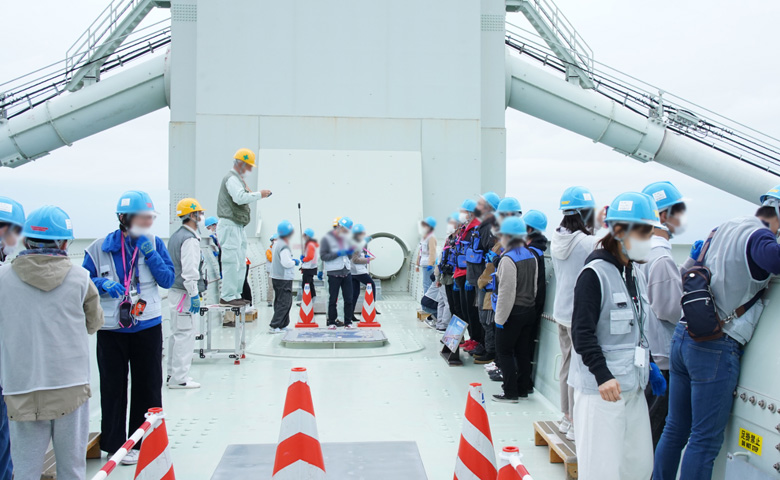
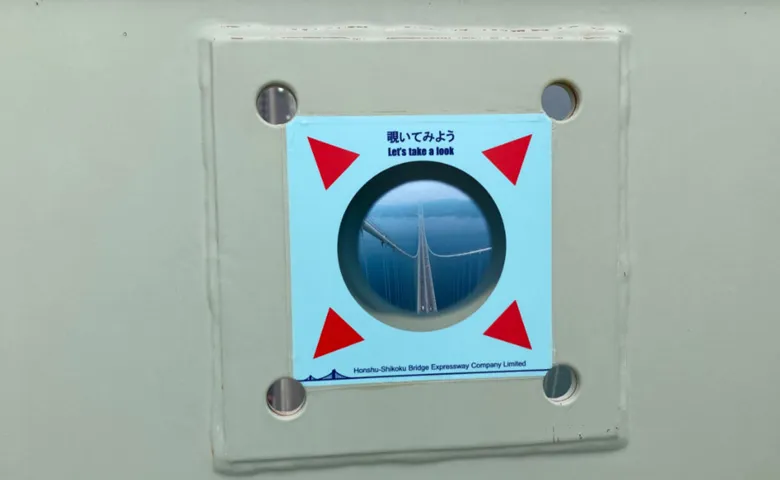
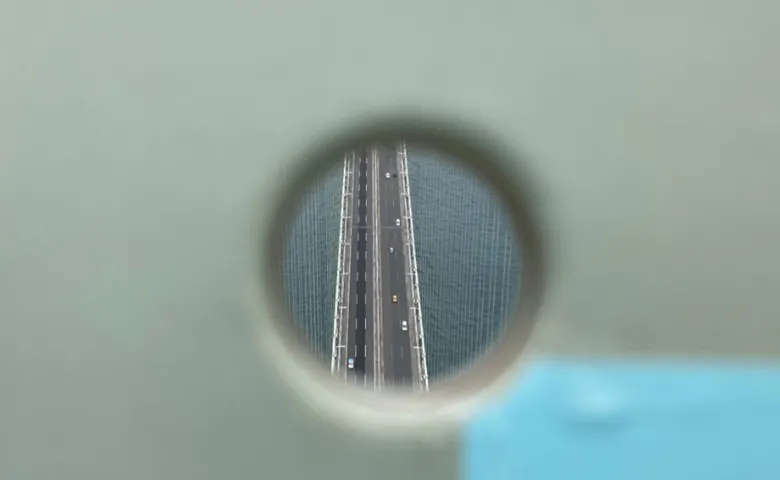
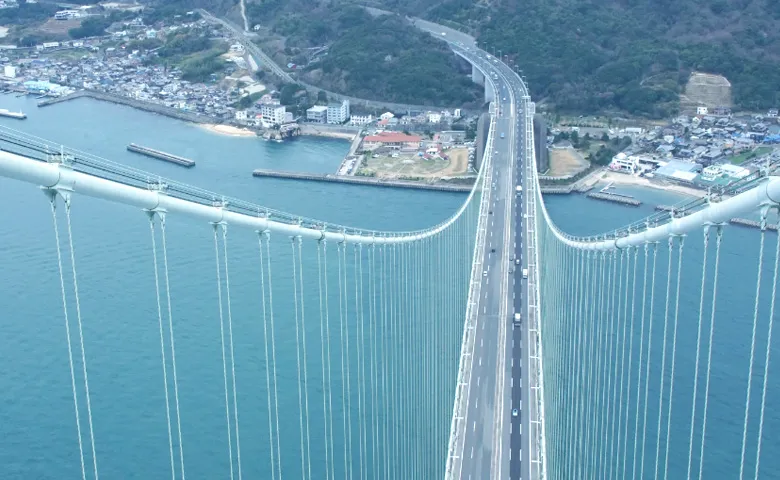
The engineer who spoke to us was also involved in the construction Onaruto Bridge, at the south end of the island. Each group took a commemorative photo at the top of the bridge, which was made into an attractive certificate and given to the group on the way back.

Once we were back on the ground, we suddenly felt both relieved and hungry. The climbing tour is the perfect pre-lunch activity. The tour runs in the afternoon as well, but I recommend the morning. Whichever you chose, though, be sure to make your reservations early to avoid disappointment.
Akashi Kaikyo Bridge Climbing World Tour Overview
The Akashi-Kaikyo Bridge World Tour in 2023 will be held on the days designated by Honshihi Kosoku out of Thursdays, Fridays, Saturdays, Sundays, and national holidays from March until November. Please check the official website.
Morning Registration: 9:30-9:45 Tour: 9:45-11:45
Afternoon Registration: 13:05-13:20 Tour: 13:20-15:20
Adult: Weekdays 5,000 yen/person and Weekends & Holidays 6,000 yen.
Junior High School Students: Weekdays 2,500 yen/person and Weekends & Holidays 3,000 yen
*Please be sure to bring your student ID book
*Payment should be made by credit card, when you reserve, before the day of the tour (don’t forget to bring your proof of reservation with you on the day)
Participation is limited to junior high school students and older who can walk at least 2 km on their own.



